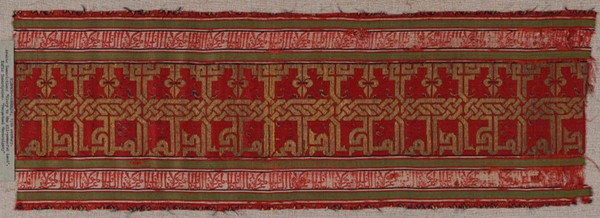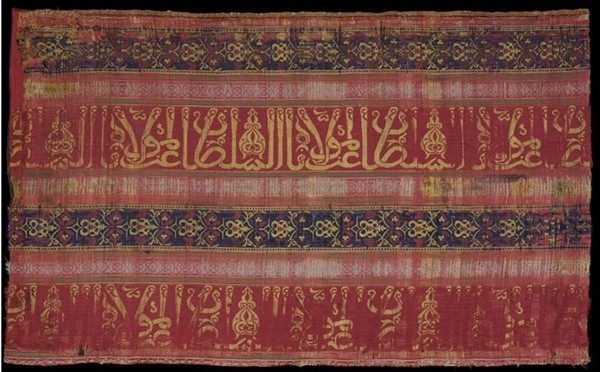|
|
|
|
#1 |
|
Administrator
Join Date: May 2008
Location: Cyprus
Posts: 194
|
Yes, that could have been a possibility but, as you say, such floor should be still in existence today or, if lost, its memory should have been recorded somewhere.
Regards, Filiberto |
|
|

|
|
|
#2 |
|
Members
Join Date: Jul 2008
Location: France
Posts: 10
|
Hello to all,
I don't think the tile hypothesis is valid in this case:  FIG b. P. del Pollaiolo, allegory of Faith, 1469-1470 Uffizi, Florence The bands format drove my research to some silk textiles fragments still existing in some museums or collections:  XIV-XVth c. Spain (made) Satin band, woven in gold thread along the centre. A simulated Kufic inscription on a red ground; along either side runs the repeating Arabic inscription "Glory to the All-powerful Lord" in red silk on a white ground, bordered by narrow bands in green, red, blue and white. Source: V&A museum website or like this one:  XIVth c. Spain (made) Silk and metal-wrapped thread in lampas weave. The weaver of this silk from Muslim Spain has accurately reproduced the flowing lines of an inscription in Arabic, a task requiring enormous care. The phrase ‘Glory to our lord the sultan’ has been repeated within the widest band in the design, creating the illusion of a long frieze of calligraphy. Source: V&A museum website Best regards, Y 
|
|
|

|
|
|
#3 |
|
Administrator
Join Date: May 2008
Location: Cyprus
Posts: 194
|
Bravo Yohann!
 And both textiles are fom Spain... Interesting. Regards, Filiberto |
|
|

|
|
|
#4 |
|
Members
Join Date: Oct 2009
Posts: 153
|
Hi Yohann,
Excellent!! You have got an amazing "nose" for extracting information from the net. Do you think you could make it perform as well for truffles?  regards Pierre P.S. I agree with Filiberto. The more we dig in "rugs and paintings" the more the feeling grows that we vastly under-evaluate the importance of Spain in rugs. |
|
|

|
|
|
#5 |
|
Members
Join Date: Jul 2008
Location: France
Posts: 10
|
There are lot of mysteries remaining especially with the long legged birds...
Y 
Last edited by Yohann Gissinger; February 28th, 2014 at 11:07 AM. |
|
|

|
 |
|
|